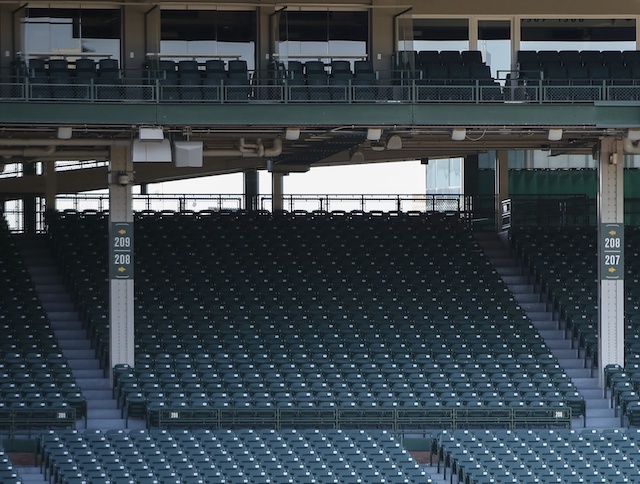Major League Baseball has a number of important issues to address as they negotiate a new Collective Bargaining Agreement with the MLBPA. One of those issues is tanking, or intentionally losing as a means of cutting costs or getting better draft picks.
Tanking is something that all American sports leagues have dealt with. The NBA has taken major steps to reduce tanking, such as flattening lottery odds and adding a play-in tournament. Meanwhile, MLB still has some work to do in that department.
One potential remedy being discussed is the addition of a salary floor. Tanking has caused absurd variations in the amount of money teams spend on their roster. The Los Angeles Dodgers had a payroll of $270 million in 2021, more than double the $127 million league average. Meanwhile, the Baltimore Orioles had a payroll of just $42 million.
This type of inequity is completely avoidable and bad for the sport, so a salary floor is a reasonable solution. However, that won’t completely solve tanking, as teams can simply overpay for bad players to increase payroll while still losing.
So, as negotiations for the new CBA continue, both sides have introduced proposals specifically aimed at reducing tanking. First, let’s look at the MLBPA’s very first offer on the subject, according to Jayson Stark of The Athletic:
FIRST UNION PROPOSAL: The Athletic’s Evan Drellich has reported that as far back as May, the Players Association trotted out a plan that would determine the draft order with a 60/40 formula that would balance market size with a team’s record the previous season:
• 60 percent weight to winning percentage (worst to best)
• 40 percent weight to market size (smallest to largest)
The most interesting concept here: Small-market teams wouldn’t have motivation to lose to get a top pick. In addition, the union made two proposals specifically aimed at penalizing tanking:
• Teams that had one of the five worst winning percentages two years in a row couldn’t pick higher than sixth the next year.
• Teams that ranked in the bottom 10 in winning percentage three years in a row couldn’t pick higher than 11th the next year.
This would be a drastic change to the current system and would absolutely hurt any team’s ability to tank. However, MLB rejected this proposal outright, going in a completely different direction for their counter.
• A draft lottery to determine the first three picks.
• Teams could not have a top-five pick more than two years in a row.
This counter is far simpler and doesn’t really address tanking at all. Rather than trying to be the worst team, teams would just try to be in the bottom three. The MLBPA rejected this and offered another counter, the most recent in the negotiations.
• A lottery to determine the first eight picks, not three.
• Small-market teams that finished in the bottom eight the previous two years are bounced out of the lottery.
• Large-market teams that finished in the bottom four the previous two years are ineligible for the lottery.
• After the first eight picks are determined by that lottery, the draft order then would begin with small-market clubs in reverse order of winning percentage the previous year, followed by large-market teams in reverse order of winning percentage.
This proposal seems to be a happy medium. It addresses tanking by only allowing a team a lottery pick in two consecutive years, and it also addresses the inherent imbalance between large-market and small-market teams.
There has been no word on whether or not this proposal was accepted, and we likely won’t know until a new CBA is agreed to. However, this could be a great starting point to the conversation surrounding tanking. Regardless of what the finalized terms are, it is almost a guarantee that tanking will be a focal point of any new agreement.
MLBPA negotiator Bruce Meyer at odds with Rob Manfred
While there seems to be a good flow of ideas regarding the tanking issue, the rest of the CBA has been troublesome for the two sides. MLBPA lead negotiator Bruce Meyer, in particular, has had problems with the way the league has gone about things.
Both sides are using the media to accuse the other of submitting radical proposals. However, Meyer has gone into specific detail about what Rob Manfred has done to make negotiations more difficult, while Manfred has given blanket statements that don’t necessarily clear up any confusion.



